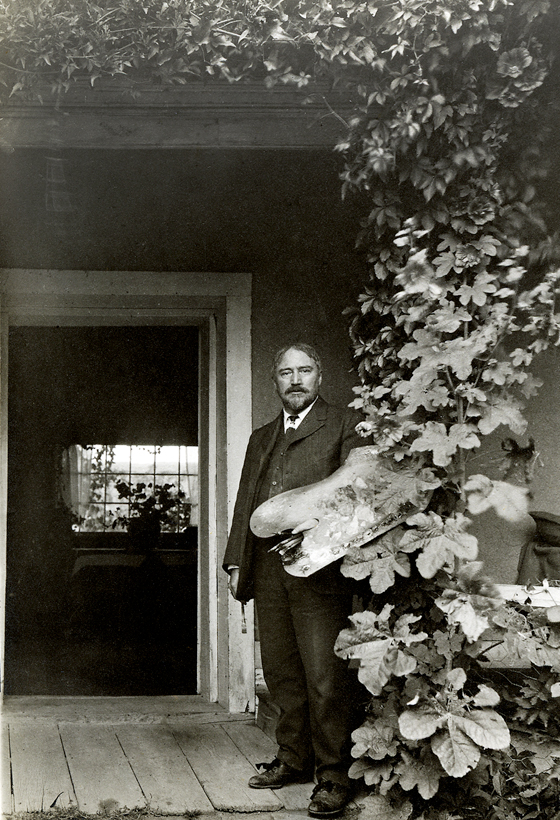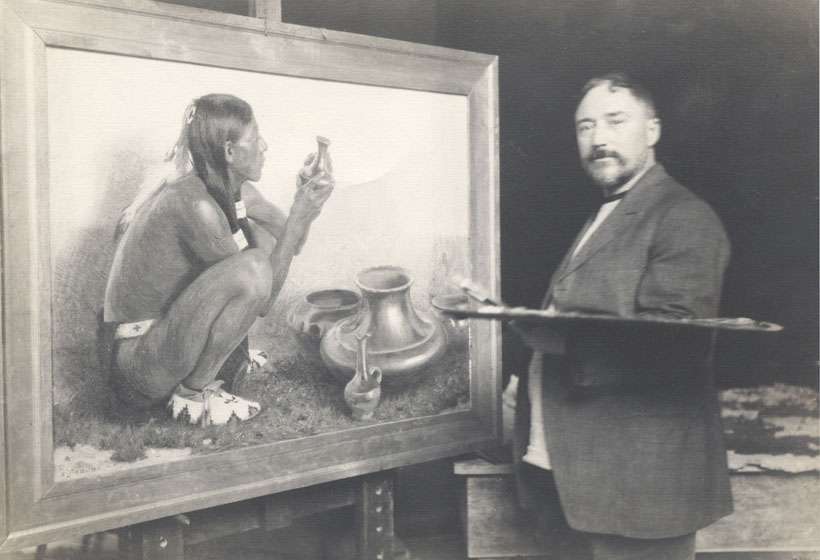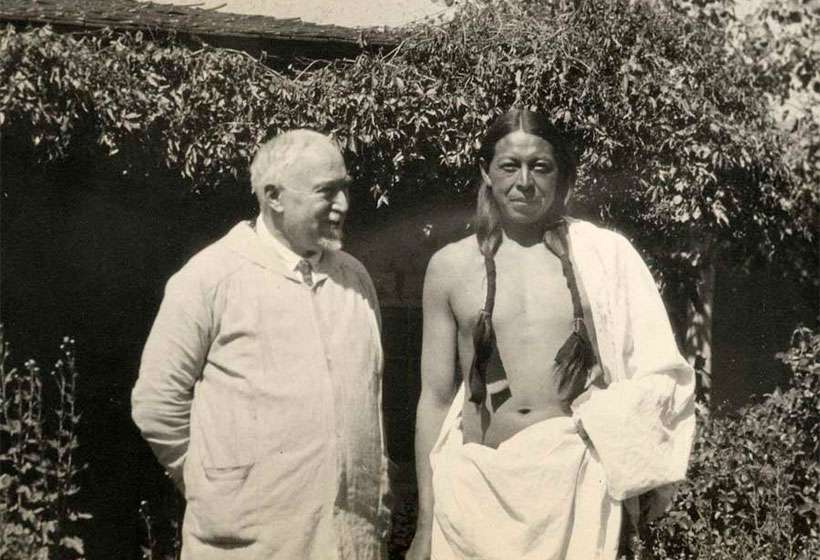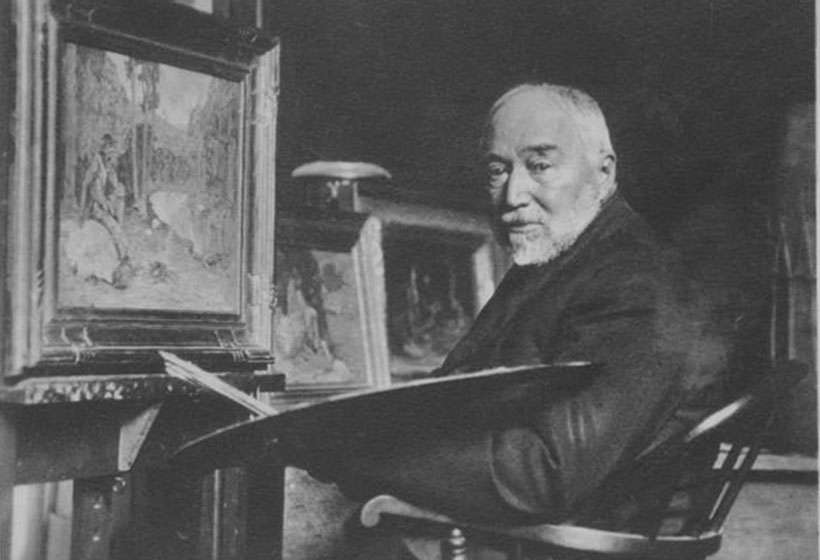Eanger Irving Couse / Biography
About Eanger Irving Couse
Eanger Irving Couse was born September 3, 1866 in Saginaw, Michigan. The Chippewa people lived close by. Young Couse's interest in Native American cultures developed very early, as did his artistic instinct. To paint the American Indian became his life-long ambition.
Schooling
He left traditional schooling at age 16 and studied briefly at the Art Institute of Chicago and then for two years at the National Academy of Design in New York City. In the fall of 1886 Couse went to Paris where he entered the Académie Julian. He learned French rapidly and was successful in his art studies under William Bougereau and Tony Robert Fleury, often winning prizes for his work.
Virginia
In the fall of 1887, he was introduced by mutual friends to Virginia Walker, a ranch girl from the state of Washington, who had come to Paris to study illustration. A romance developed and they were married in Paris in 1889.
Couse wanted to paint a major Indian picture for the Paris Salon and Virginia convinced her husband to return to America and live for a year on her family's ranch in Washington, where he could find Indian models. The Captive, a history painting based on an incident associated with the Whitman Massacre, was his first painting depicting an Indian subject. It was shown in the Paris Salon of 1892 and now hangs in the Phoenix Art Museum. His wife and a local Klikitat Indian were his models.
Back in France, the Couses moved in 1893 to Etaples, a small fishing village and art colony on the coast of Picardy. They remained there for three years while he painted French peasants and fisher folk. Their son, Kibbey, was born in Etaples.
Taos
In 1898 the Couses established a winter studio in New York, but summers were spent away from the city, painting in Washington, Connecticut and France. Couse learned of Taos in May of 1902 through a conversation with his friend, Ernest Blumenschein. Two weeks later Couse arrived in northern New Mexico with his family to begin a lifetime of summer residency and the development of the oeuvre for which he became famous. He was one of the founders of the Taos Society of Artists in 1915 and its first president. A painter of Native Americans in Taos for the rest of his life, he was honored with many major prizes and awards.
Couse died in 1936 after a long and distinguished career.








